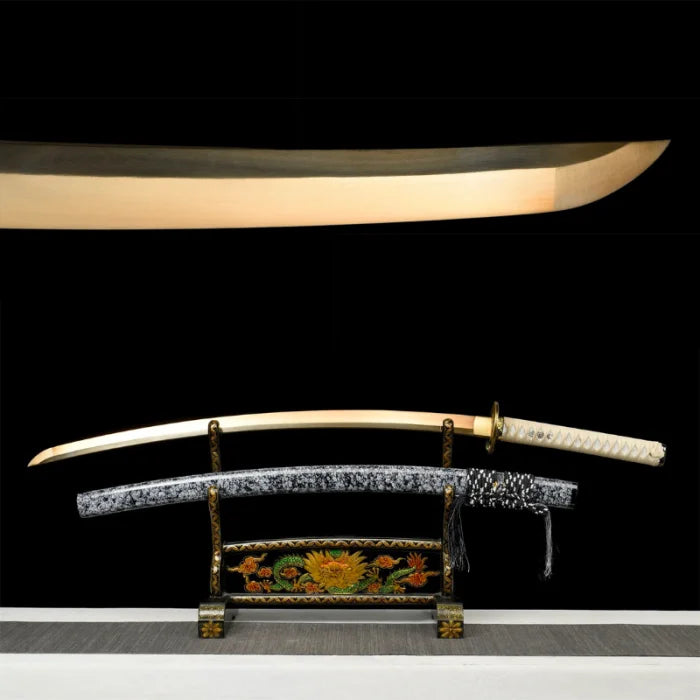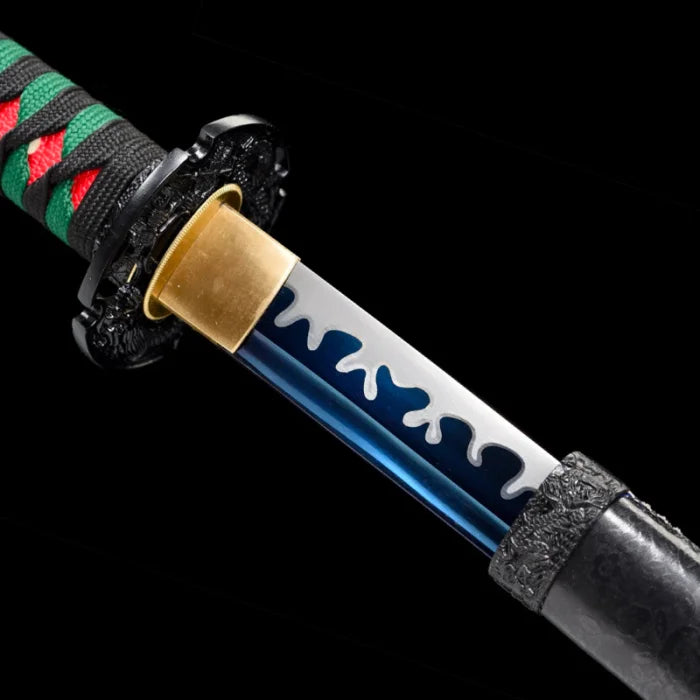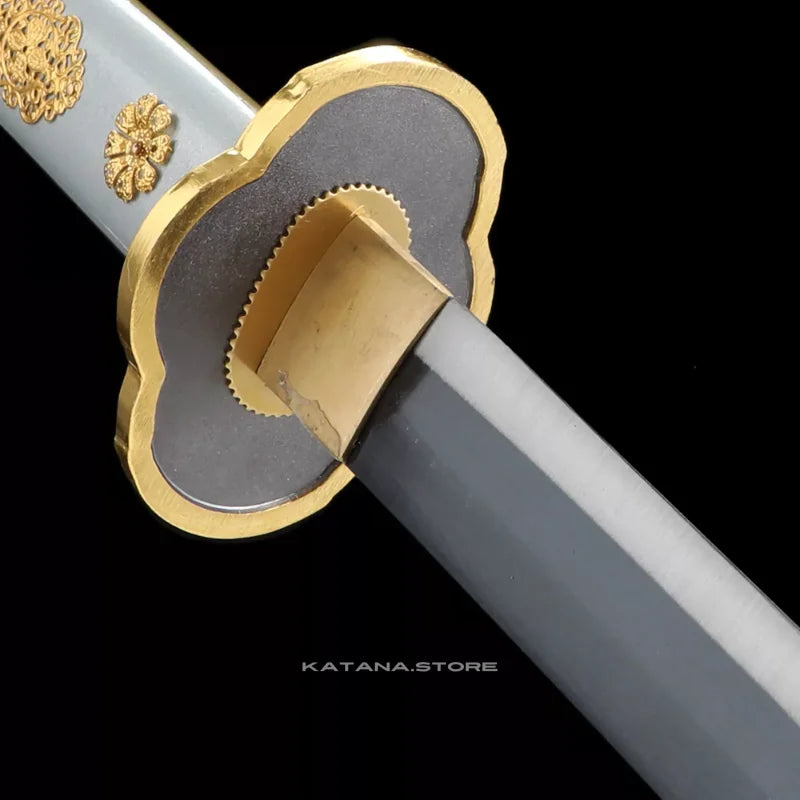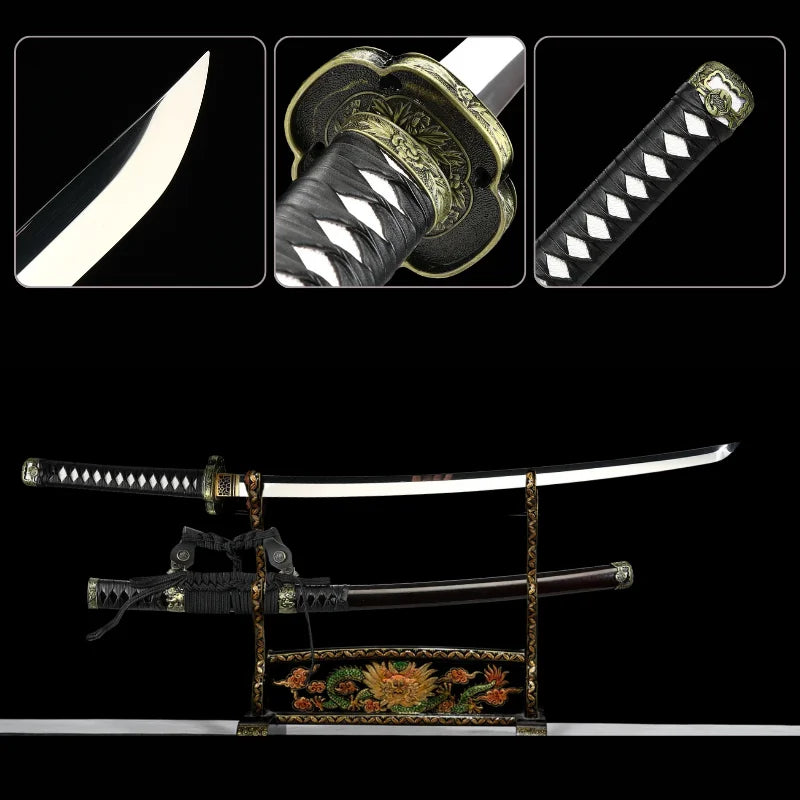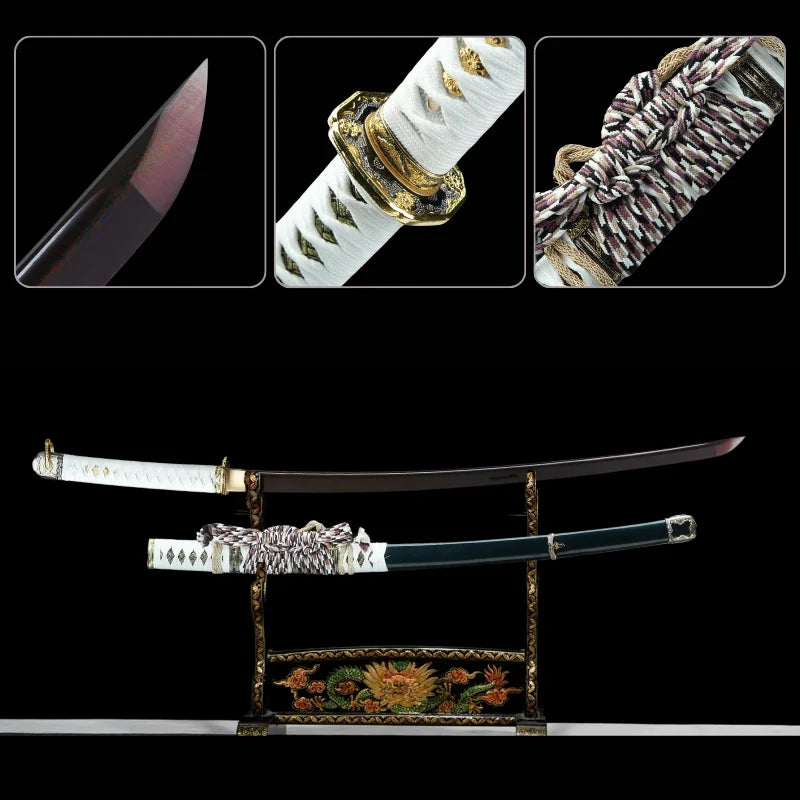Tachi
Our Tachi Sword Collection pays honor to the illustrious past of these superb swords by fusing the creativity of skilled swordsmiths with the warrior spirit. Each tachi is a one-of-a-kind work of art that embodies the samurai's distinctive power, honor, and accuracy.
What is a tachi sword
The more well-known katana is a form of traditional Japanese sword that predates the tachi. During the Heian period (794-1185 AD), when conflicts and battles were fought on horseback, it was the chosen weapon of the samurai class. Tachis are distinguished by their long, curved blades and intricate, handcrafted fittings, which symbolize the samurai's high status and crucial position in traditional Japanese culture.
Tachis are designed to be worn with the cutting edge facing down, suspended from the belt in a unique style known as "tachi style." This differentiates them from the later katanas, which are typically worn with the cutting edge facing up. The design of the tachi, from its distinctive curvature to the position of the signature on the tang, is intended for efficient use on horseback, making it a weapon of both practicality and elegance.
Origin of Tachi Swords
The Tachi, an antecedent to the now-famous Katana, occupies a prominent position in Japanese historical lore. Originating in the Heian period, the Tachi represented a critical advancement in the craft of Japanese sword-making, tailored to meet the demands of samurai warriors who predominantly engaged in horseback combat. The Tachi's design, characterized by a deeper curve and a longer blade than the katana, was optimized for drawing and striking from horseback.
This distinct curvature facilitated a smoother draw from the scabbard, crucial for the swift and fluid movements required in cavalry combat. The Tachi's allure and practicality are elevated by the masterful craftsmanship of its blade and the exquisite artistry of its fittings, frequently embellished with elaborate motifs and crafted from premium materials such as gold, silver, and silk.
With shifts in warfare dynamics and the evolving role of the samurai, Japanese sword design also underwent significant changes. The advent of the katana, characterized by a shorter and less pronounced curve in its blade, mirrored the shift towards more ground-based combat techniques. However, the legacy of the Tachi endured, its design influencing subsequent Japanese swords and leaving an indelible mark on the cultural and martial heritage of Japan.
Tachi VS Katana
While both the tachi and the katana are revered symbols of the samurai, understanding their differences is key to appreciating the unique qualities of each sword. The tachi is generally longer and more curved than the katana, with the signature (mei) on the tang carved in a different position. This difference in design reflects the change in combat style over time, with the tachi being designed for cavalry use and the katana being optimized for foot soldiers.
Additionally, the method of wear also distinguishes the two swords. The tachi is worn hanging from the belt with the cutting edge down, while the katana is worn thrust through the belt with the cutting edge up. This not only impacted how the sword was drawn but also influenced the fighting techniques used by the samurai.
Distinctive Features of Tachi
The Tachi is distinguished from other Japanese swords like the katana by its unique design and functional features. Notably longer and more curved than its counterparts, the tachi was designed primarily for cavalry use. Its blade, often forged from folded steel and tempered to achieve a razor-sharp edge, was effective for downward strikes from horseback. The tachi features a fuller (blood groove) to reduce weight and improve balance, enhancing its lethality and ease of use in combat. The scabbard and hilt were often lavishly decorated, reflecting the status and prestige of its samurai owner. The lacquered scabbard, adorned with intricate carvings and inlays, often depicted scenes from Japanese mythology or symbols of power, like the dragon or phoenix.
Tachi as Collectibles and Decorative Pieces
Today, the tachi is esteemed not only for its pivotal role in Japanese martial history but also as a collector's item of immense artistic worth. Its profound historical relevance, coupled with the masterful craftsmanship of traditional Japanese blacksmiths, renders the tachi a treasured asset among collectors and aficionados. In contemporary times, replicas of these venerable swords are created with a deep commitment to historical authenticity, encompassing every detail from the blade's distinctive curvature and length to the ornate designs intricately etched onto the hilt and scabbard. These replicas often become centerpiece displays in homes or offices, signifying a connection to the samurai ethos and Japanese heritage. As decorative pieces, tachi swords add an element of elegance and tradition to any setting, be it a Japanese restaurant, a sushi bar, or a private study. The tachi's aesthetic appeal lies in its graceful form and the stories it tells through its engravings and design, making it a symbol of both Japanese art and history.
Caring for Your Tachi Sword
Proper maintenance of a Tachi sword is crucial to preserving its beauty and historical value. The care process is an art in itself, reflecting the respect and reverence for this emblematic weapon. To maintain the blade, it's crucial to regularly apply a non-acidic oil, which helps guard against rust and corrosion. This step is particularly important for blades crafted from high-carbon steel, a material prone to oxidation. When handling the blade, using gloves or ensuring your hands are clean and free from oils is recommended to prevent leaving any corrosive fingerprints on the metal.
The scabbard, often lacquered and sometimes adorned with intricate inlays, requires gentle cleaning with a soft cloth to maintain its luster and prevent any chipping or cracking of the lacquer. Sharpening, a key aspect of Tachi care, should be entrusted to a skilled polisher familiar with traditional Japanese techniques to maintain the blade's edge and integrity. Regular inspections for any signs of damage, such as chips in the blade or loosening of the hilt, are vital for its upkeep.
Purchasing a Tachi Sword
Acquiring a Tachi sword can be a significant addition to any collection of Japanese weapons or as a standalone piece symbolizing the rich samurai heritage. When considering a purchase, it's important to determine the purpose of the sword - whether it's for martial arts practice, display, or as a collectible item. Authentic Tachi swords, forged by traditional blacksmiths using age-old techniques, offer the highest quality and historical accuracy. These swords often feature exquisite craftsmanship in their folded steel blades, which display distinctive patterns unique to the forging process.
The hilt and scabbard, traditionally lacquered and engraved with symbolic designs, add to the sword's aesthetic and historical value. Replica Tachi swords are also available for those seeking a more affordable option or for purposes like cosplay or decoration. These replicas, while not forged through traditional methods, still offer a semblance of the Tachi's elegance and are often made with attention to detail.
Whether for martial arts, historical study, or decorative purposes, owning a Tachi sword is a way to connect with and celebrate the enduring legacy of the samurai and the artistry of Japanese sword-making.
Unique hand-forged tachi for sale
Adding a samurai tachi sword to your collection is an opportunity to own a unique piece of history. Each sword in our Tachi Sword Collection embodies the samurai spirit and acts as a physical reminder of Japan's illustrious history. Owning a tachi is a sign that you value the richness and beauty of conventional Japanese culture, whether you prefer to exhibit it as a piece of art or use it for martial arts training.
We have the largest selection of Tachi Japanese swords available so you can pick the ideal one for you. You can also complete your Samurai's gear with ninjato, another samurai sword.
Filters
21 products





